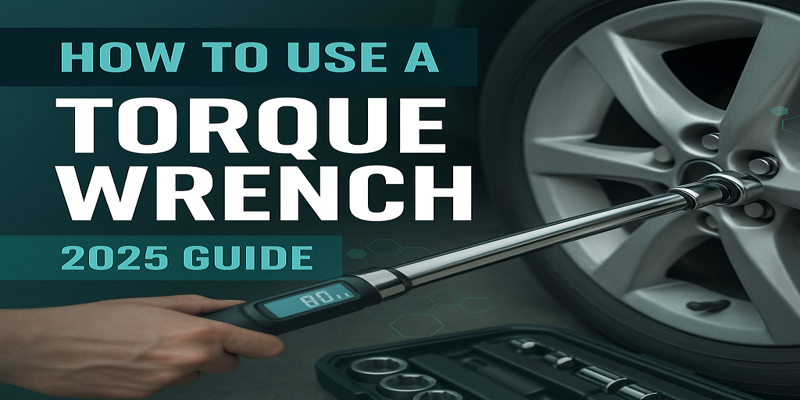Table of Contents
Toggle🔧 How to Use a Torque Wrench (2025 Guide) – Easy & Accurate Steps for Beginners
How to use a torque wrench correctly is one of the most essential skills for mechanics, cyclists, engineers, and DIYers alike. Whether you’re working on a car engine, installing bike parts, or tightening delicate electronics, a torque wrench ensures that each bolt is tightened to precise manufacturer specifications — preventing both over-tightening and under-tightening.
In this 2025 beginner’s guide, you’ll learn exactly how to use a torque wrench, step-by-step. We’ll also cover types of torque wrenches, safety tips, calibration advice, and frequently asked questions — all SEO-optimized to help you rank and work with confidence.
⚙️ What Is a Torque Wrench?
A torque wrench is a specialized tool that applies a precise amount of rotational force to fasteners like bolts and nuts.
It ensures that parts are neither too tight (risking damage) nor too loose (risking failure).
Torque is usually measured in:
- 🔧 Foot-pounds (ft-lbs) – commonly used in automotive and industrial work
- 🔧 Inch-pounds (in-lbs) – for lighter jobs like electronics or motorcycles
- 🔧 Newton-meters (Nm) – metric system used globally
🧰 Common Types of Torque Wrenches
- Click-Type Torque Wrench
- Most popular for general mechanics
- Clicks when desired torque is reached
- Beam Torque Wrench
- Has a needle that moves on a scale
- Affordable and visual
- Digital Torque Wrench
- LCD screen, beeping/LED alerts
- Accurate but more expensive
- Dial-Type Torque Wrench
- Precise, great for lab or aviation work
- Heavier, less common
- Preset Torque Wrench
- Fixed torque, used in assembly lines or specific applications
🛠️ Step-by-Step: How to Use a Torque Wrench
Let’s walk through the exact process of using a click-type torque wrench, which is the most common tool in garages and workshops.
✅ Step 1: Find the Required Torque Specification
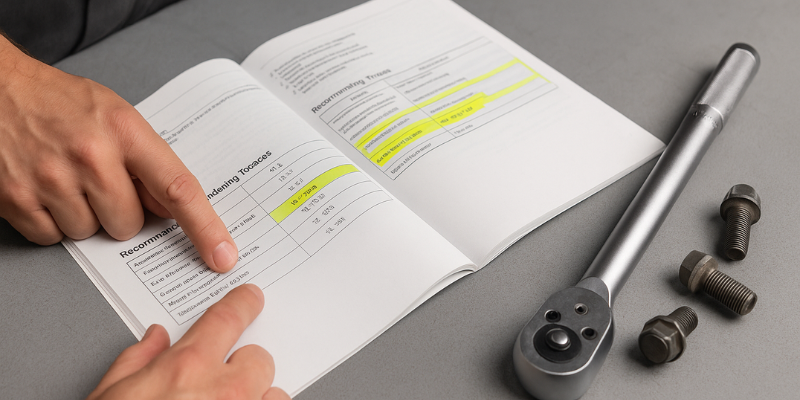
Start by checking the owner’s manual, repair guide, or spec sheet for the part you’re working on. The required torque is always specified by the manufacturer.
Example:
- Lug nuts: 80–100 ft-lbs
- Bicycle stem bolts: 5–6 Nm
- Engine head bolts: 50–100 ft-lbs (in sequence)
Using the wrong torque value can lead to stripped threads or bolt failure.
✅ Step 2: Select the Right Torque Wrench
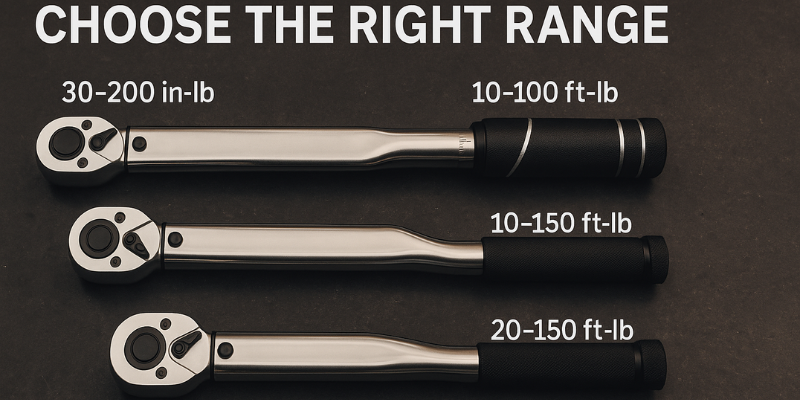
Choose a torque wrench with a torque range that includes your target value.
- For 5–25 Nm → Use a 1/4″ torque wrench
- For torque settings between 20–100 ft-lbs, a 3/8″ or 1/2″ drive wrench is typically recommended.
- Don’t use a wrench at its max or min — aim for the middle 60–80% of its range for best accuracy
✅ Step 3: Set the Torque Value
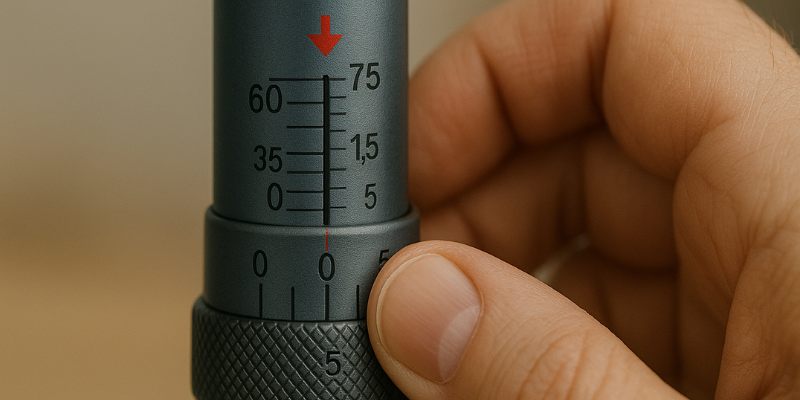
If you’re using a click-type wrench:
- Unlock the handle (twist the knob or collar at the base)
- Turn the handle clockwise to raise the torque
- Align the values shown on the main scale (shaft) and the micro scale (handle) to set your torque.
🔍 Example:
Set to 75 ft-lbs → align “70” on the main scale and rotate handle to “+5”
Then lock the handle again to secure the setting.
✅ Step 4: Attach the Proper Socket
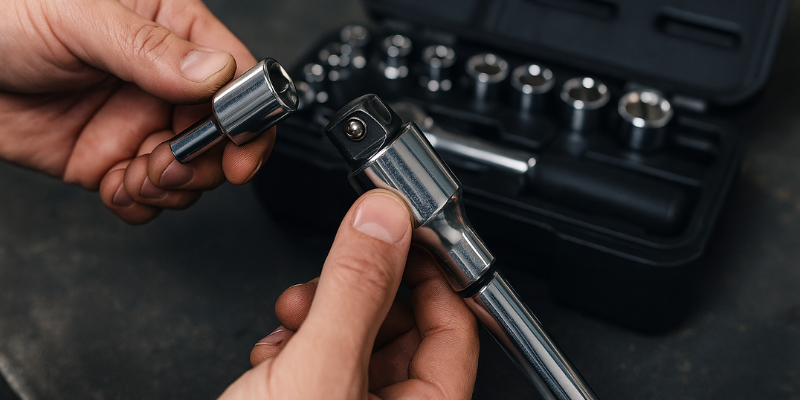
Attach the correct socket to the drive head:
- Match the socket to the fastener head (hex, Torx, etc.)
- Use extensions if needed, but be cautious as it can affect torque accuracy
✅ Step 5: Position the Wrench and Apply Force
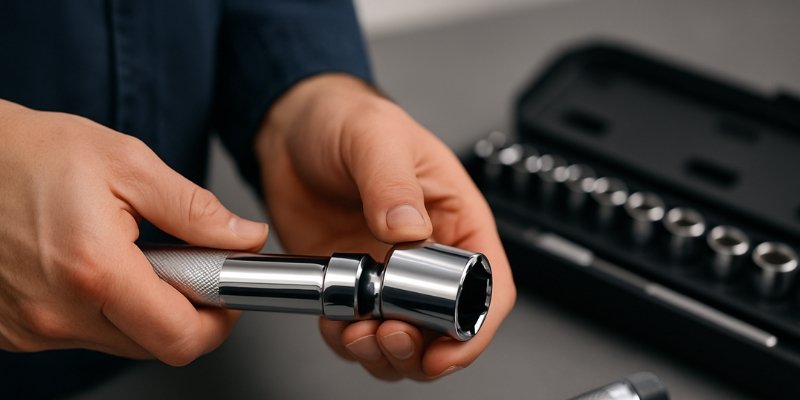
- Place the socket on the bolt or nut
- Hold the torque wrench by its handle (centered)
- Turn smoothly and slowly
- Listen and feel for the “click” sound, which signals that the target torque has been successfully applied.
🛑 Important: Stop turning as soon as it clicks. Do not overtighten.
✅ Step 6: Reset the Wrench After Use
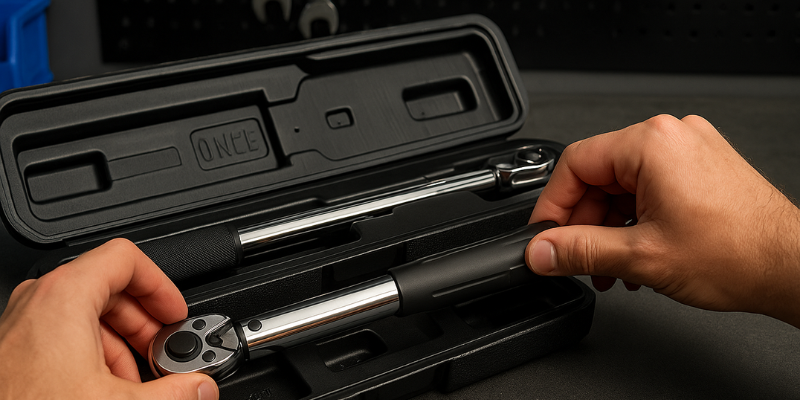
Once done:
- Set the torque back to its lowest setting (but not zero)
- This reduces tension on the spring and preserves calibration
Always store the wrench in its case in a dry area.
✅ Benefits of Using a Torque Wrench
Using a torque wrench correctly ensures:
- ⚙️ Bolt integrity – no over-tightening or under-tightening
- 🔧 Equipment longevity – avoid stripping threads or cracking surfaces
- 🛡️ Safety – especially important for brakes, wheels, and steering systems
- 📈 Performance – essential for engine tuning and high-torque parts
- 📐 Professionalism – consistent, documented torque application
🔍 Real-World Examples of Torque Wrench Use
- Automotive Lug Nuts – Setting each lug nut to 90 ft-lbs after rotating tires
- Bicycle Carbon Frame – Torquing seat post bolts to 6 Nm to avoid crushing
- Engine Work – Head bolts in sequence to 60 ft-lbs for proper compression
- HVAC Systems – Used to tighten compressor housing bolts to manufacturer-specified torque levels.
- Electronics Assembly – Securing screws to 10 in-lbs to protect circuit boards
📘 Torque Conversion Table (Quick Guide)
| ft-lbs | Nm | in-lbs |
| 10 | 13.6 | 120 |
| 25 | 34.0 | 300 |
| 50 | 67.8 | 600 |
| 75 | 101.7 | 900 |
| 100 | 135.6 | 1200 |
❌ Common Mistakes to Avoid
❌ Using torque wrenches to loosen bolts
❌ Ignoring calibration
❌ Grabbing the wrench near the head (reduces accuracy)
❌ Not reading the torque spec correctly
❌ Using incorrect socket size
🧪 How Often Should You Calibrate a Torque Wrench?
You should recalibrate your wrench:
- Every 12 months
- After 5,000 uses
- Or after dropping it
Calibration ensures the internal spring and ratcheting mechanism stay accurate. Most pros use certified calibration services once a year.
🛒 Recommended Torque Wrenches for Beginners (2025)
1. Tekton 24335 1/2″ Drive Click Torque Wrench (10–150 ft-lbs)
- Dual scale (Nm and ft-lbs)
- Chrome finish, ratcheting head
- Affordable and highly rated
2. EPAuto 1/4” Drive Click Torque Wrench (20–200 in-lbs)
- Great for small fasteners and electronics
- Comes pre-calibrated with case
- ±4% accuracy
3. Wheeler FAT Wrench (10–65 in-lbs)
- Perfect for scopes, optics, and firearms
- Comfortable grip, precision inch-pound settings
❓ Frequently Asked Questions (FAQs)
Q1: Can I use a torque wrench to loosen bolts?
A: No. Torque wrenches are designed only for tightening. Use a breaker bar for loosening.
Q2: Should I hear a click?
A: Yes, click-type wrenches make a distinct click at the target torque.
Q3: What happens if I overtighten a bolt?
A: You may strip the threads, crack the part, or compromise safety.
Q4: What size torque wrench should I buy first?
A: When it comes to general car maintenance, a 1/2″drive torque wrench is often the go-to tool.
Q5: How do I store a torque wrench?
A: Reset to the lowest setting, clean the head, and store it in its case in a dry space.
Q6: Do I need multiple torque wrenches?
A: If you work on a variety of equipment (cars, bikes, firearms), then yes, for different torque ranges.
Q7: Can digital torque wrenches replace click types?
A: Yes, but they’re more expensive. Digital offers alerts, memory, and display screens.
Q8: Are torque wrenches worth it?
A: Absolutely. If you value safety, durability, and performance, they’re essential.
Q9: What’s the best torque wrench brand?
A: Tekton, CDI, GearWrench, and Wheeler are top picks for most users.
Q10: Can I use adapters or extensions?
A: Yes, but use torque-specific extensions. Standard extensions can affect readings.
✅ Final Verdict
Knowing how to use a torque wrench properly is a game changer — not just for your tools, but for the safety and performance of every project you work on.
From bicycle bolts to brake calipers, torque matters. Follow the steps in this guide:
- ✅ Know your torque spec
- ✅ Choose the right wrench
- ✅ Set it carefully
- ✅ Stop at the click
- ✅ Maintain calibration
Whether you’re a weekend warrior or a professional technician, mastering this tool will save you time, stress, and costly repairs.

